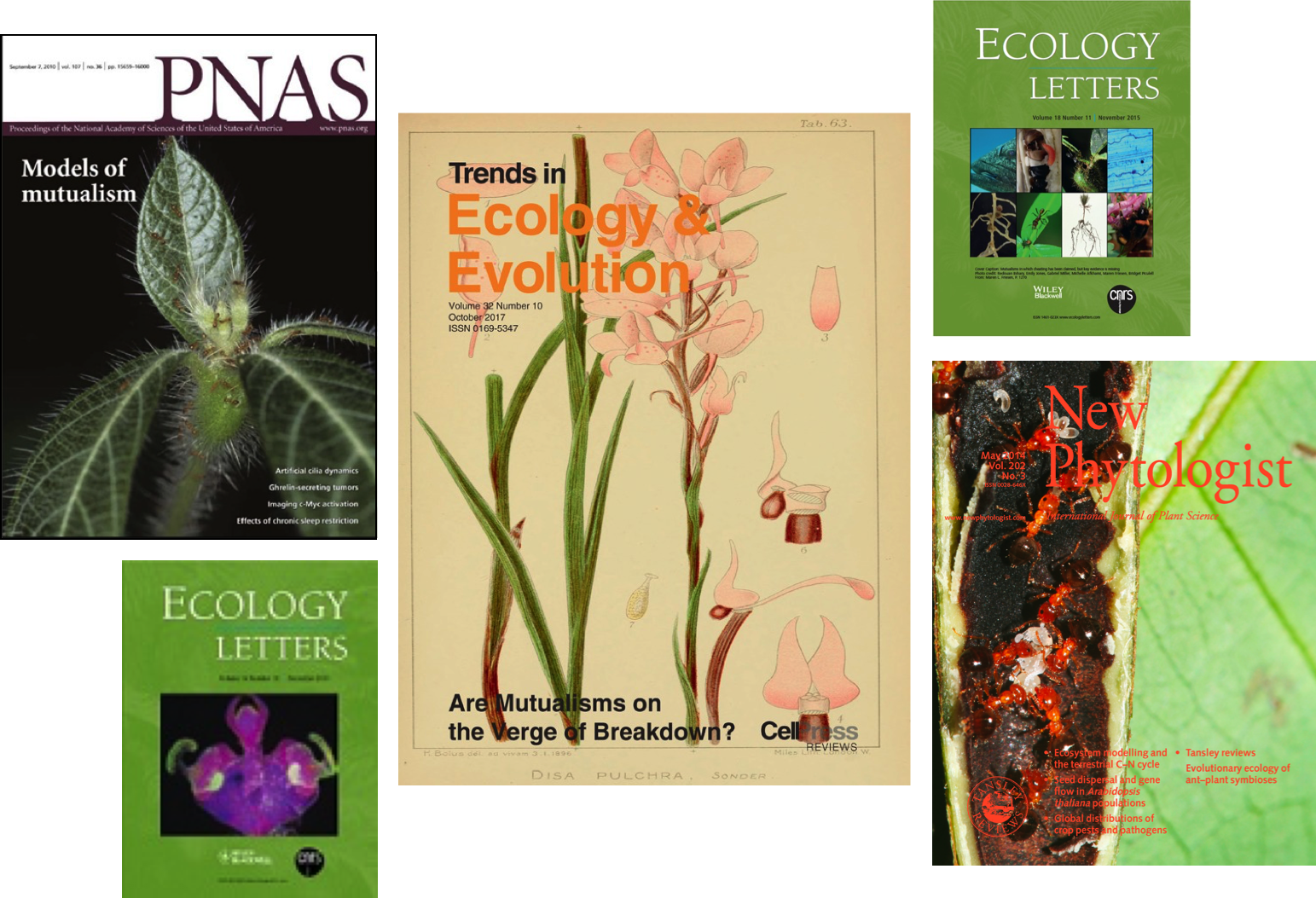Publications
For the most up-to-date list, see Google Scholar.
2023
[69] Harrison TL, Parshuram ZA, Frederickson* ME, Stinchcombe* JR. Is there a latitudinal diversity gradient for mutualistic microbes? A case study with sensitive partridge peas. Molecular Ecology, accepted, bioRxiv, doi:https://doi.org/10.1101/2023.05.03.539300 *Authors contributed equally.
[68] O’Brien AM, Laurich JR, Frederickson ME. Evolutionary consequences of microbiomes for hosts: impacts on host fitness, traits, and heritability. Evolution, accepted. bioRxiv, doi: https://doi.org/10.1101/2022.02.10.479958.
Popular Media
2020
, 384–397
2019
2018
2017
2016
2015
2014
2013
2012
2011 & earlier
[11] Edwards DP*, Frederickson ME*, Shepard GH, Yu DW. 2009. A plant needs ants like a dog needs fleas: Myrmelachista schumanni ants gall many tree species to create housing. The American Naturalist 174: 734-750. *These two authors contributed equally to this publication.
[8] Frederickson ME. 2009. Ecological models of mutualism, exemplified by interactions between ants and myrmecophiles. Ecology 90: 2336-2337. (Book review)
[6] Frederickson ME. 2008. The evolutionary biology of herbivorous insects: specialization, speciation, and radiation. The Quarterly Review of Biology 83: 413. (Book review)
Ants are friendly to some trees, not so nice to others. U.S. News & World Report
When industrious ants go to far. Science Daily
Rodríguez AM. 2009. Secret of the Plant-killing Ants … and More! Enslow Publishers, Inc.: Berkeley Heights, USA.
Attack of the tree-killing Peruvian ants. The Baltimore Sun
A devil’s garden tended by ants. The New York Times
BBC’s Life in the Undergrowth with David Attenborough
Book Contributions
Frederickson ME. 2015. Some ants sterilize their host plants, but are they “cheaters”? In: Bronstein J (ed.) Mutualism. Oxford University Press, Oxford, pp. 99-100.


